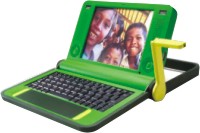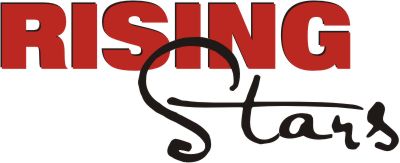
By, Charlie Jane Anders
 Hollywood often does such a bad job translating comic books to film, it's better to start from scratch. When movies create their own original superheroes, they can have the cool comic booky trappings, without the need to include/ignore/defile decades of print history. If it works (The Incredibles) you get something really fresh. When it doesn't... it's only about as bad as a superhero movie based on a comic.
Hollywood often does such a bad job translating comic books to film, it's better to start from scratch. When movies create their own original superheroes, they can have the cool comic booky trappings, without the need to include/ignore/defile decades of print history. If it works (The Incredibles) you get something really fresh. When it doesn't... it's only about as bad as a superhero movie based on a comic.
Sky High (Disney) - Comic books already gave us a high school for superheroes, but did it have Kurt Russell as a famous superhero and father to the next generation of heroes? I didn't think so. Plus Lynda Carter is the school's principal. The business about the school separating kids into Heroes and Sidekicks is a bit too comic book-y, in some ways. But it's a cute romp, despite the fact that the main character's superpowers suddenly manifest themselves at the most convenient moment.
Meteor Man - It actually had its good moments, but dissolved into incoherence and lukewarm gags. Townsend plays Jefferson Reed, a school teacher who finds a piece of meteorite that gives him superpowers, and uses it to confront gangs in his inner-city neighborhood.
The Incredibles (Disney/Pixar) - Yes, I know you're going to say this movie is a rip-off  of the Fantastic Four. But it's actually just different enough to have its own identity nobody would confuse Mr. Incredible's big-lunk persona with Mr. Fantastic's brainy gumby schtick. And this is a textbook case for why superhero movies can be better without a direct comic-book source. The Pixar crew are free to create their own backstory for the Incredibles, including an anti-hero law and a special superhero tailor. it doesn't have to try and shoehorn in Doctor Doom, the Negative Zone, or any of the other trappings of the FF.
of the Fantastic Four. But it's actually just different enough to have its own identity nobody would confuse Mr. Incredible's big-lunk persona with Mr. Fantastic's brainy gumby schtick. And this is a textbook case for why superhero movies can be better without a direct comic-book source. The Pixar crew are free to create their own backstory for the Incredibles, including an anti-hero law and a special superhero tailor. it doesn't have to try and shoehorn in Doctor Doom, the Negative Zone, or any of the other trappings of the FF.
Darkman (Not Disney) - Supposedly Sam Raimi wanted to do a movie starring Batman or The Shadow, but couldn't get the rights. So instead he created his own hero, a scientist who gets disfigured in an attack by mobsters, then gains the ability to disguise himself as anyone thanks to a new synthetic skin. An incredible cast, including Liam Neeson and Frances McDormand, helps elevate this movie above the usual superhero fare, and it's easily as good as Raimi's first two Spider-Man movies. (And much, much better than the third one.)
Unbreakable (Disney's Touchstone Pictures) - It's sort of a meditation on how a comic-book villain (Samuel L. Jackson, with his wackiest hair yet) actually creates his own superhero (Bruce Willis). Given that many movies and comics now revolve around the idea of superheroes like Batman creating villains like the Joker, it's refreshing to see it the other way around.
Underdog (Disney) - A movie based on the 1970s cartoon series about a super-powered dog who comes here to save the day. A failed police dog gets experimented on, and develops amazing superpowers. Then he gets adopted and renamed Shoeshine, but secretly sneaks out to fight crime on the side.
Greatest American Hero (Disney) - Another movie based on a TV show, this time the live-action show about a schoolteacher (again) who finds a costume that gives him amazing powers but he doesn't have the instruction manual for how to use them. Luckily, he does have a cranky FBI agent snarking at him. Why is that lucky? Actually, I'm not sure.
The movie starts filming in July, and it features a new villain, another schoolteacher who gets his own super-powered costume from aliens who want to exploit the Earth.
The Green Hornet (Not Disney) - Originally a radio serial about a Batman-esque rich guy who runs a crusading newspaper and fights crime at night in a mask, with his Korean chauffeur Kato, the Green Hornet became a series of movies in the 1940s. And in the 1960s, it was a short-lived TV series that included Bruce Lee as Kato. And now it's going to be a movie again, supposedly starring Seth (Knocked Up) Rogen. Somehow Rogen beat out George Clooney and Mark Wahlberg for the lead role (or, more likely, they turned it down.) I'm imagining with Rogen in the lead role, it's not going to be a dead serious rendering of the Hornet's story.
Blankman (Not Disney) - Another blaxploitation superhero spoof, this time starring Damon Wayans as a genius inventor who learns to make clothes bulletproof and becomes the lowest-budget superhero ever, Blankman. David Allen Grier stars as the friend, who's skeptical but winds up becoming Blankman's sidekick, Other Guy.
Black Scorpion (Not Disney) - On the heels of Tim Burton's slightly less campy reinvention of Batman, Roger Corman decided to bring back the camp with Black Scorpion, his story of a policewoman (Joan Severance) who can't find justice. So she straps on a shiny black rubber bustier and a black fetishy mask and prowls the streets in her high-powered car. The original film includes a character named Tender Lovin', which is really all you need to know. The film earned a sequel, Black Scorpion II: Aftershock, and a short-lived TV series on, wait for it... the Sci Fi Channel. Slogan: Justice has a nasty sting.
The Specials (Not Disney) - The Specials deals with a group of misfit third-string superheroes on their day off, leading their dysfunctional lives and horrifying their newest member, Nightbird. One of the few superhero comedies that doesn't go for the super-broad humor and stereotypes, unlike...
My Super Ex-Girlfriend (Not Disney) - Luke Wilson dumps Uma Thurman's superhero, G-Girl, and she goes on a vengeful rampage. So he sells her out to a supervillain, Professor Bedlam, and nearly destroys the world in the process.
Source: www.io9.com

By, beb-E
Burnout is the (second) most fun you can have with cars and not get in trouble for it. The most is driving with the top down, at hundreds of kilometers per hour, without a worry in your joyful soul. But, we aren't talking about either of those things.
Developed by Bugbear Entertain, FlatOut first came out in 2004, with a sequel following in 2005, with some improvements and new game modes.
FlatOut: Ultimate Carnage first came out last year's June on the Xbox 360, and just recently made it to the PC as a port this August.
When it all comes do it, FlatOut is simply an alternate to people who can't play Burnout, because it's damned console exclusive. And there's nothing else to it. It does a pretty good job at that, too. Being an alternate, I mean. FlatOut: Ultimate Carnage is FlatOut with much more improved graphics and better physics.
Story: There's no story. Ever. In games like these.
Sound: The sound… just doesn't get to you. The noise of the engine is somehow annoying. You think, “That's not what an engine should sound like. The damn thing should roar out like a lion, a roar that starts from the center of the engine and comes out from all around and strikes deep into the heart that says, 'I'm a frigging power-car. Drive me like I should be driven.' Yeah…” But, it doesn't. It's just a constant loud grr. The crashing noises, though, are a different matter. When you crash into a barrier at more than 100 kmph, there's some comfort to it. But, that again is turned annoying by your screaming driver. All in all… It's okay.
Graphics: FlatOut uses quite a good physics engine. Dents and scratches appear on cars as they're made, where they're made. Falling objects will only damage the top part of the car, and most environmental objects are destructible. However, other than that, the visuals are nothing very impressive. The water looks quite nice and driving over them makes splashes which are... not exactly right. Still. All in all… It's okay.

Just the kind of flying cars we like, along with flying glass and driver
Gameplay: It's the not the sounds, nor the graphics that the game tries to catch your attention with. No. It's the gameplay. There are three primary modes. The FlatOut mode. The Carnage mode. And the single events (quick plays). For some reason, the FlatOut mode… somehow fell flat and a bit dull- they were mostly like normal races and I couldn't keep on playing it, for the want of something similar to Burnout. I found my want answered in the Carnage mode which is just destruction, destruction and some demolition. You progress through the carnage mode by playing available events and getting a score high enough to unlock the next thing.
There's Carnage race, where the objective is to end up with the highest score. Score is obtained through destroying scenery or wrecking other cars. Being in the first place gives a higher multiplier to your score. There's a deathmatch derby, similar to carnage race… Think FFA deathmatch. Another mode is the “Beat the bomb”, where you have to reach checkpoints before the time runs out or you'll explode. Checkpoints add seconds to your time, and the objective is to go as far as possible.
And then… there are the stunts. You get to jump through a ring of fire, high jumps, bowling (yes, the game with the balls and the pins), ski jumps, basketball, darts, baseball, soccer and so on. How do you play these, you ask? Simple. You get a runway. You drive along the runway, and at the end, launch you're the driver at an angle that you think will get the most score. Personally. I liked the Ring of Fire best. There's something very… infernally fun about it.
Conclusion: It's moderately good value for your money. I mean… You don't have to buy an Xbox now to play something like Burnout. The gameplay is fun and mindless enough to be considered good. It can pass the time when the time needs to be passed. The stunts are fun, and sometimes difficult enough to get to your ego and make you spend more time than you'd wish to. In the end… It all comes down to this question- Do you have Burnout? If you answered Yes, then forget about FlatOut. If you answered No, but own a console, get Burnout and forget about FlatOut. If you answered No, and don't own a console. Get FlatOut. It's the next best alternative…

By Monty Python
You have finally saved up enough to buy a laptop! Better yet, your brilliant results have finally persuaded your parents to get you a laptop. For some time, the craze of the computer arena of Bangladesh has been laptops. Why not, they are now cheaper than ever before, and all the big brand names are making the laptops available at a price that is just within the reach of middle class families. However, buying a laptop is quite a major decision because the opportunity cost is none other than a much more powerful desktop PC. Hence your tech guru, aided by his recent experience in going through the computer market with a comb to buy the perfect notebook PC, has prepared a checklist of information to help you make your decision better.
Before you decide
Like I said, buying a laptop PC is really a big deal. It is not just because of the prices (which has been really low recently), but also because of the fact that a laptop can never really seriously replace your desktop PC in terms of power and playability (games!). that's right folks, if you are dreaming about taking Crysis on the go while you are on a holiday, then drop it, as most laptops do not have that kind of powerful graphics chip embedded. As a matter of fact, style apart, the most important reason for you to buy a laptop should be its utility and mobility factors.
The usability of a laptop is decided by what you want to achieve with it. If you want high end gaming, then most notebook PCs will disappoint you. But if you want entertainment and movies on the go, then it is okay to invest. If you are a power user, or a graphic designer, then the choice of notebooks is even narrower and pricier. But if you simply plan to use your everyday Office software for note taking and presentation, then it's okay to go for it. Mobility is important, as the other main objective is to be able to move around with your computer. If you travel a lot, or of you are tired of moving back and forth between home and lab PC to get your project done, then well it is a right choice too.
What you get and what you don't
I hope that by now you are clearer about your needs regarding a notebook computer. Now, how about comparing a notebook with a desktop PC to find out exactly where a notebook stands in relation to a desktop PC (which costs roughly the same)? First of all, you ought to know that with the money that you plan on investing on a laptop, you can buy a desktop that's roughly twice as powerful. That's because you have to pay premium as laptops are branded items. Its chips and other embedded technology obviously cost much higher than traditional PC technology.
The other thing that you don't get is the ability to upgrade your laptop on the fly as you do with your desktop. Most desktops allow you to change your RAM, graphics, storage and even the processor very easily. But in a notebook, the parts are embedded and are impossible to change. In fact, the only upgrade you are allowed is to have a second RAM chip and perhaps to change your hard drive. So keep that in mind when you buy your laptop. They are a lot less adaptable than their desktop counterparts.
What you DO get, however is relative peace of mind. Unlike clone PCs, laptops are all  branded. And they are optimally matched and come with a preinstalled operating system that is fully compatible with the hardware. Most vendors provide extensive after-sales service and warranty so you won't be bothered about your PC for a long time. Not to mention you get to show off to your friends!
branded. And they are optimally matched and come with a preinstalled operating system that is fully compatible with the hardware. Most vendors provide extensive after-sales service and warranty so you won't be bothered about your PC for a long time. Not to mention you get to show off to your friends!
The price factor
Now let us get down to the price factor. The market for notebook PCs maybe divided into three segments. The low end, the medium and the high end (duh!) Low end PCs are priced between 40 thousand to 60 thousand taka. The middle range PC cost between 60 thousand to 90 thousand. The high-end PCs are priced from 1 lac to about 2 lac depending on the model and make. Now what do you get in these various price ranges? Obviously in the low end you get a low-end processor such as Celerons with clock speeds of 1.6 Ghz to 2 Ghz. The mid ranges offer you Dual Core processors of varying speed. The absolute high-end PCs have Core 2 Duo processors of much higher clock speed and performance.
The other difference is in the gizmos and gadgets that come with the baggage. Low-end notebooks have the rudimentary stuff, while high ends' offer you Wi Fi, web cam, or DVD writers. High-end PCs also have larger LCD screens and hard drive/RAM. Finally, High and medium ranged PCs have Windows Vista support while many Low end comes with no operating system whatsoever (FreeDOS or some tiny Linux support does not count in my chart as OS). On the downside, many high-end notebooks weigh much more than low end.
Now that you know the basic differences, its time you sit down with the calculator. Most students are bound to be cash strapped and have a limited budget. But if you really want the computer, you have to go and do a lot of hunting in the computer markets. But perhaps it is a good idea to find out what exactly you need. If you don't need the Wi Fi support or don't fancy the webcam, and is not crazy about copying each and every DVD that you buy in your hard drive. Maybe a low range PC is just right for you. If ever you need to have wireless connection, you can simply go true mobile with USB modem or a Wi Fi PCMCIA card (you need to check of the machine has an expansion slot). You can always attach a webcam to your laptop. But these PCs aren't really future proof as their upgrade option maybe low. Some low-end PCs also suffer from low battery juice, enabling you to be wire free for 2 to 3 hours max.
If you are somewhat power user, work with lot of productivity stuff such as Photoshop, Illustrator or CAD, then you need to lighten up and spend a little bit more. Mid range notebooks have more power and juice than low ends and will enable you to work with software in an office environment.
Finally, if you have tons of cash, and the desire to show off, or if you are a super heavyweight user and hungry for some raw power that will put most desktop users to shame, then by all means go for a branded high end PC. The models that fall in these category are priced from 1 lac up to anything. They have the latest OS, they will give you continuous satisfactory service for years and will take a long time to become redundant.
Another option for high-end consumers is to buy laptops from abroad. While machines brought from abroad are good, IMHO they have some problems. Firstly, their warranties and after sales do not always apply here. Then there is the problem of the Bangladeshi weather, which people say are too humid for machines to work satisfactorily for several years. I hope that this article helped you on your way to be a proud owner of a notebook PC. Remember, always buy a known brand that gives good after sales service and warranty.
